I was lucky to go on a trip to Bordeaux this Autumn. I was hosted for the trip by CIVB, the Conseil Interprofessionnel du Vin de Bordeaux, who market the full range of Bordeaux wines throughout the world. The trip aimed to give me an overview of each of the major areas within the region, visiting and trying wines from a variety of producers to give me an insight into the variety of wines that this huge area produces.
Bordeaux is the largest wine producing area in France (113400 hectares), double the size of its closest rival the Rhône Valley. I will share some of the highlights of my trip and some ideas if you thinking of visiting.
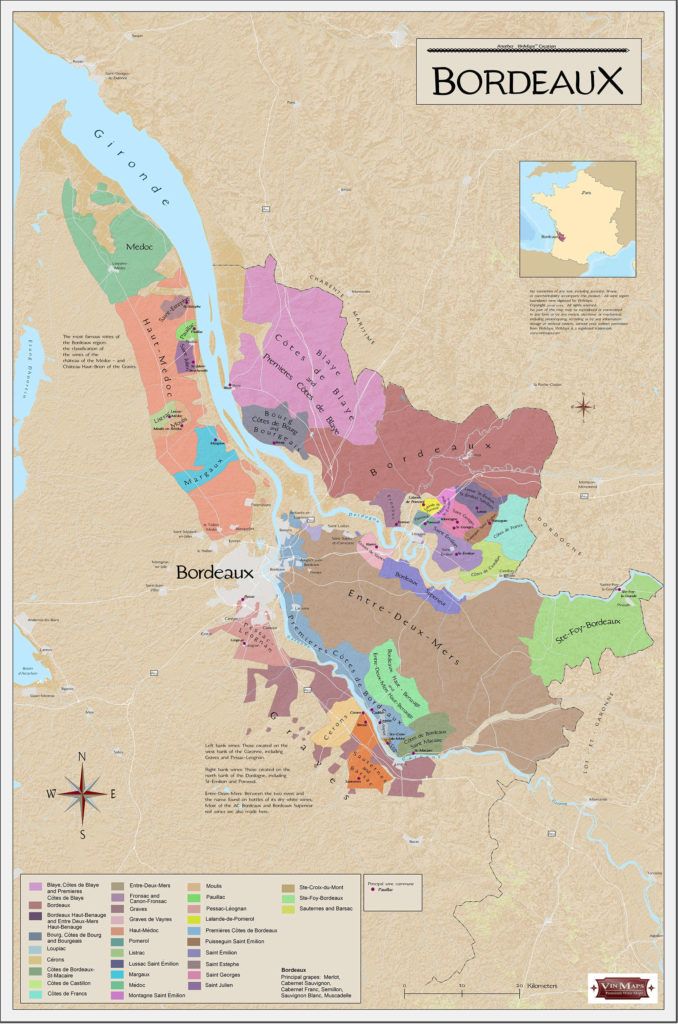
We based throughout our stay in the heart of the city of Bordeaux. This city has seen major change in last decade or so, with the centre of the city being pedestrianised and a tram system being installed. The local limestone that is used in all the local building has been scrubbed clean.
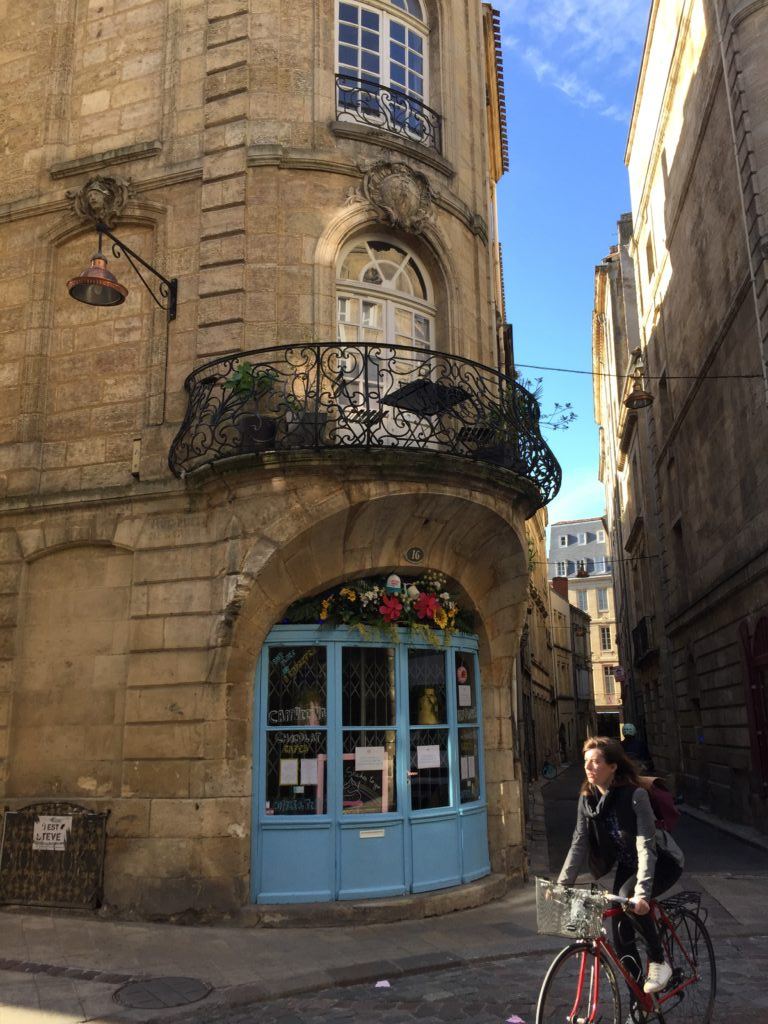
Designated a UNESCO World Heritage city since 2007, it is a beautiful place and well worth taking in over a day or so. The city sits on the left bank of the Garonne river, which leads in to a vast estuary the Gironde shortly after the city when the Dordogne river joins it. These two rivers and the estuary dominate the landscape in Bordeaux and create much of the differences between the appellations within the region.
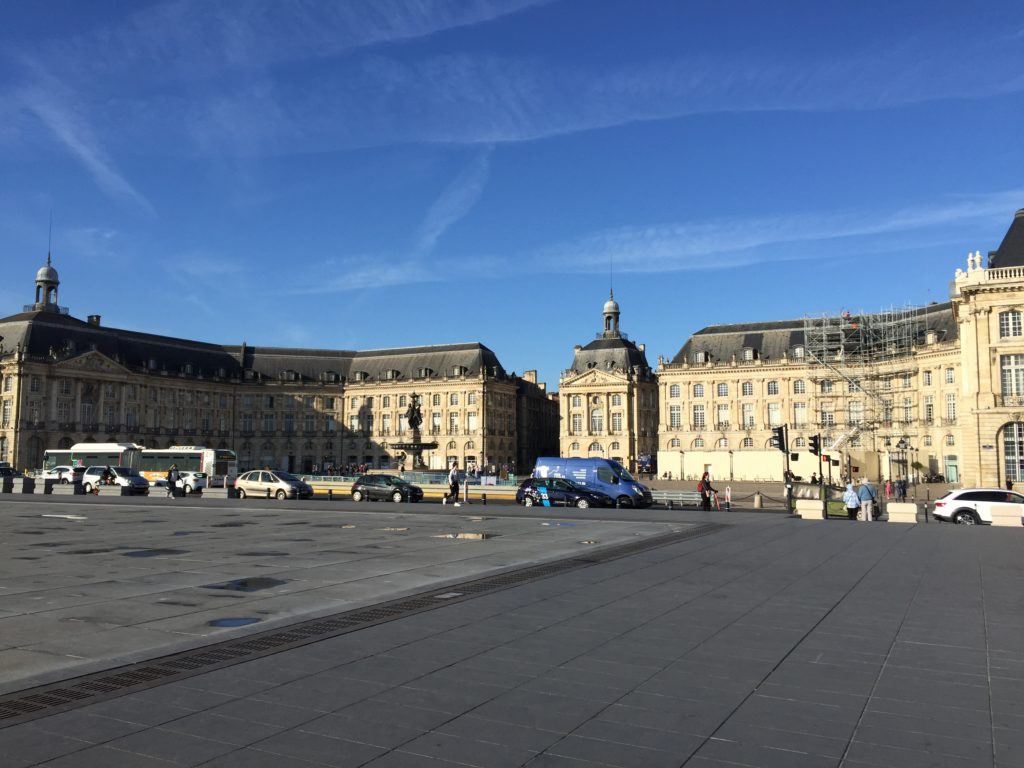
The Médoc
The Médoc is the area to the North West of Bordeaux on the Left Bank of Gironde. This area was formerly swamp land until the first half of the 18th Century before its gravel soils were drained. These gravel soils and the area’s proximity to the estuary (which moderates the temperature) create the conditions for the ripening of the key grape variety here, Cabernet Sauvignon. We visited Chateau Fourcas-Hosten in one of the lesser known Médoc appellations of Listrac, which is tucked between Margaux and Saint-Julien though slightly set back from the Estuary. The owners of the Hermès fashion label own this delightful Chateau, and the 18th Century building is a marvel to explore. The Chateau’s vineyards are in two separate areas within the appellation, one is on gravel soils the other on clay limestone. The gravel soils are great to help ripen Cabernet Sauvignon as they retain heat and drain well. Whilst the clay limestone soils are good for Merlot, as they retain moisture and are cooler, which stops the Merlot from over-ripening. Thus Fourcas-Hosten is a good example of how the different soils type in Bordeaux influences the use of different vines creating the Bordeaux blend of Cabernet Sauvignon and Merlot.
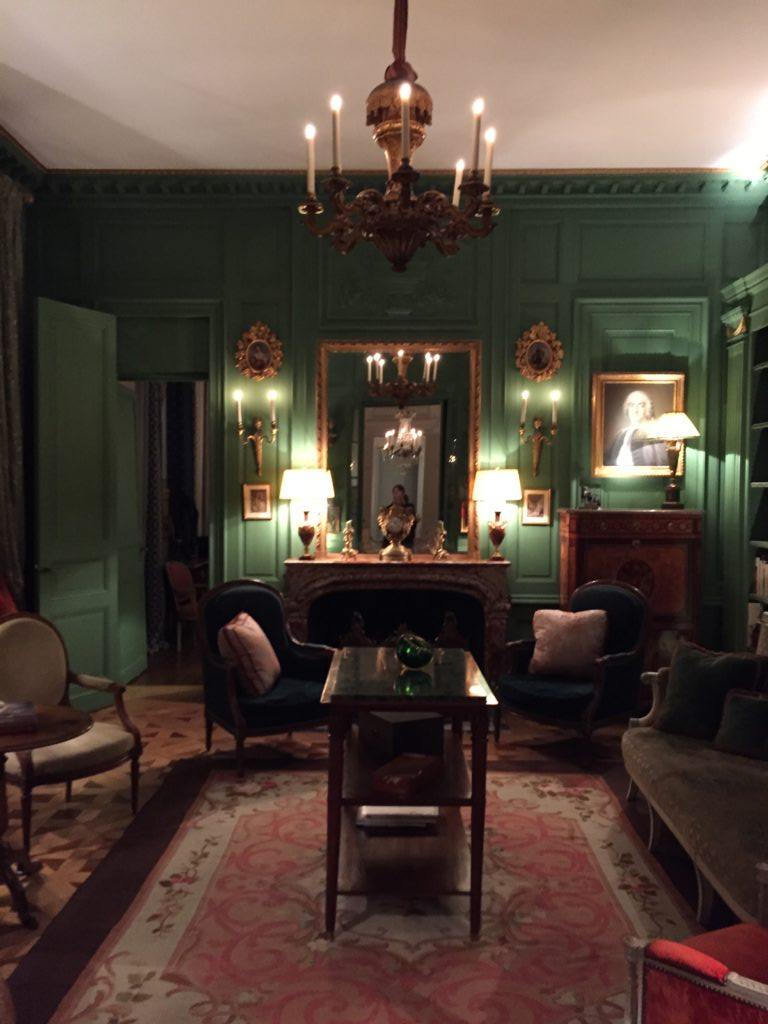
Entre-deux-Mers
On the second day of my trip we visited an area of Bordeaux that is oft overlooked in the UK, Entre-deux-Mers. This hilly area is between the Garonne and Dordogne river and is dominated by smaller producers making both white and red wine. We visited Chateau de Bel, a small Chateau run by Olivier Cazenave. The Chateau is beautifully situated, backing on to the Dordogne river with a picturesque river terrace. Olivier is somewhat atypical as a winemaker in Bordeaux, looking to produce different styles and pushing the boundaries of what is allowed by the appellation board.
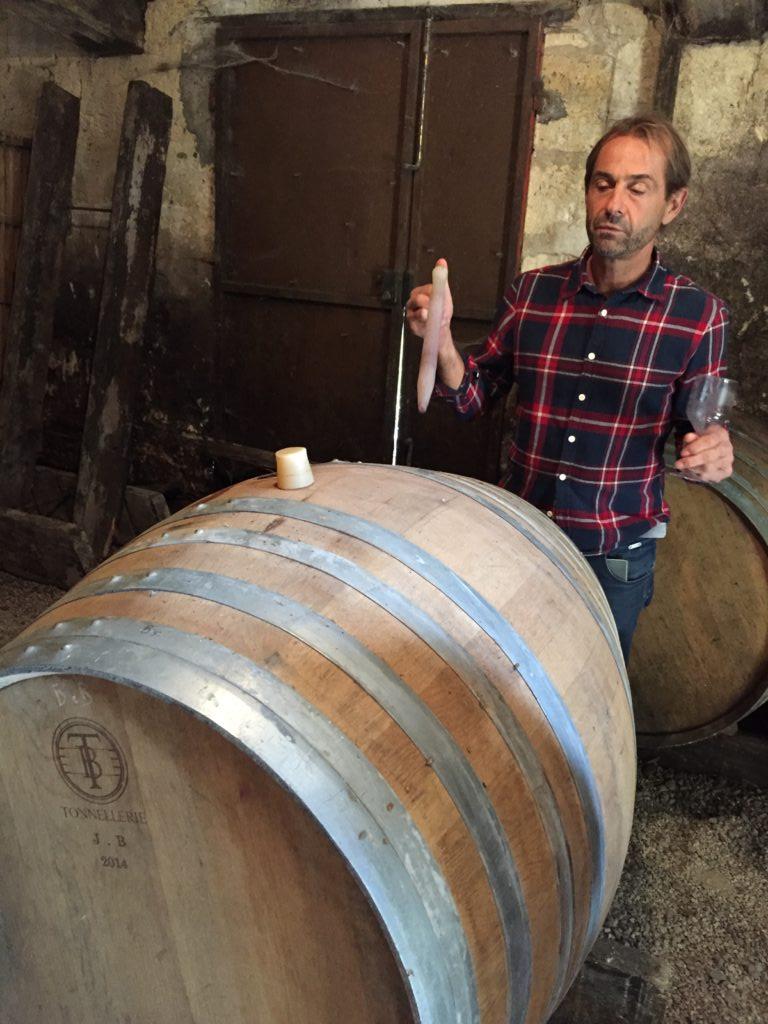
We tasted from barrel a Chenin Blanc, which the board initially wanted him to build a separate cellar for! He has vineyards around his Chateau, but in recent years these have been badly affected by frost, thankfully he also produces wine from grapes bought from other parts of Bordeaux. These wines include some interesting cuvees; he sources some fine muscadelle which he barrel ages for 3 years which tastes like a fine white Rioja, he also makes a wine from 100% Cabernet Franc which is made from a blend of different vintages. It was refreshing to see a different style of Bordeaux after the more traditional Chateau. The Chateau does have two Gites connected and would be a lovely spot to stay for a short trip to Bordeaux.
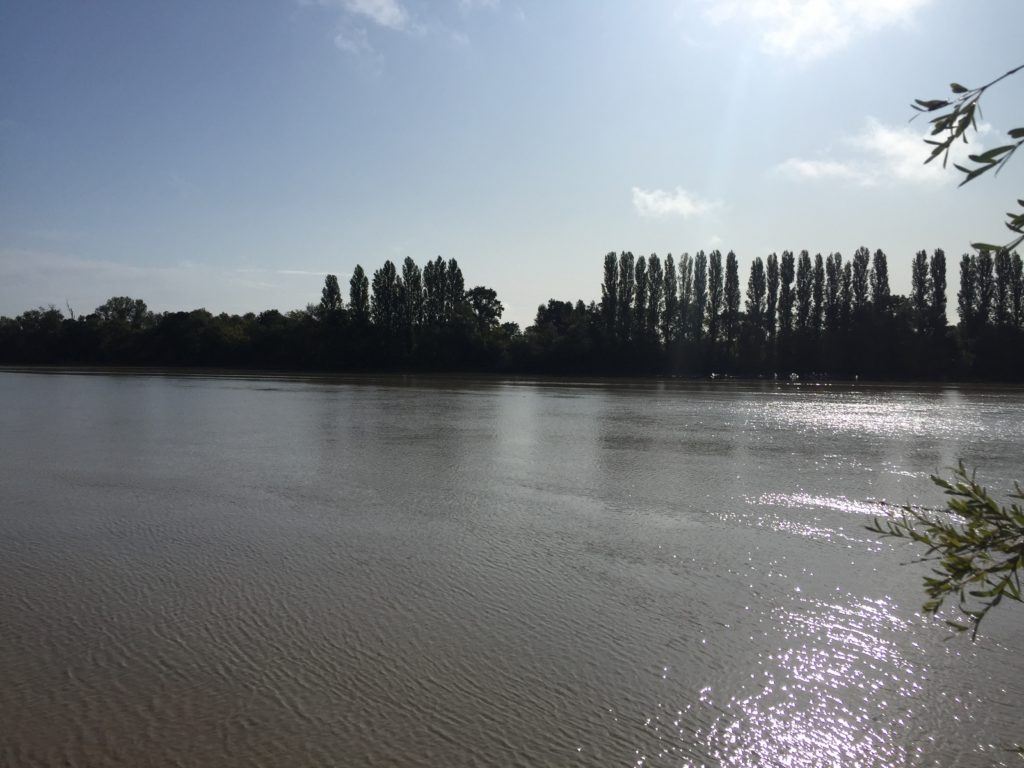
St Emilion
We travelled North from Chateau de Bel to the appellation of St Emilion. This area sits on the right bank of the Dordogne and along with Pomerol, Fronsac and several satellite appellations they are collectively known as the Right Bank of Bordeaux. The soil here is different from the Left Bank, with clay and limestone being the main components rather than gravel. This soil is cooler and retains more moisture than gravel soils, this makes it more suitable for the easily ripening merlot than the heat loving Cabernet Sauvignon. The estates on the Right Bank are much smaller and the majority are family owned. We visited one of the largest estates in the appellation, Chateau de Pressac.
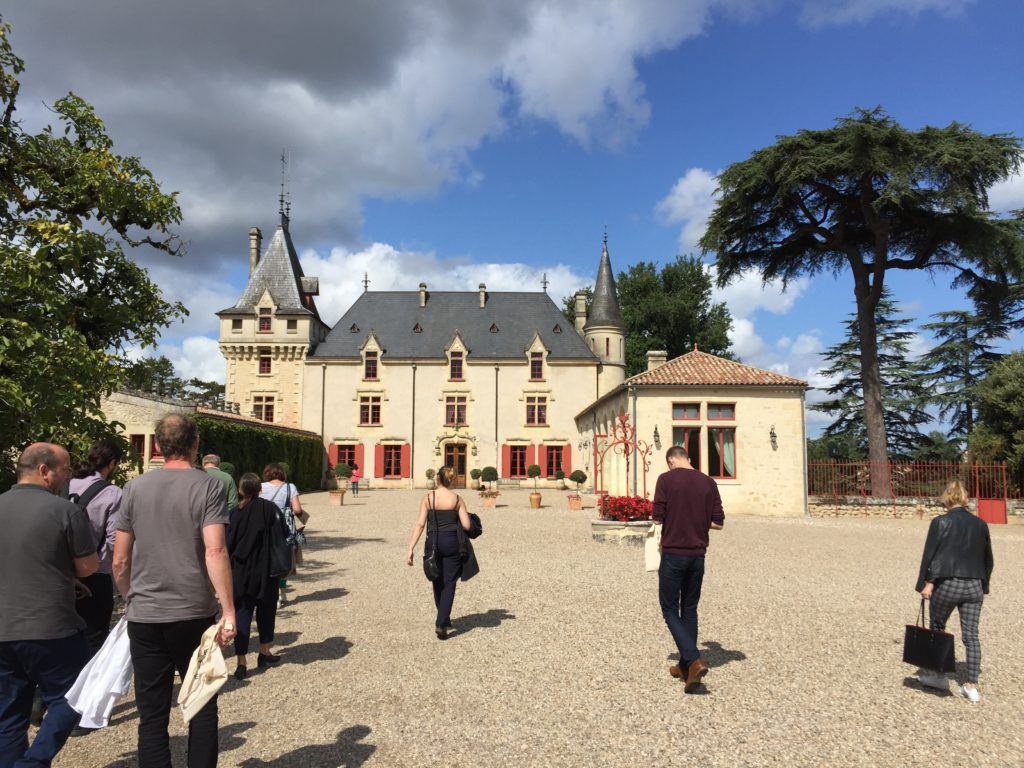
The Chateau is an imposing building sitting high on a knoll looking out over the countryside. The current owner, Jean-Francois Quenin bought the estate in a dilapidated state in 1997. At which point 40% of the old vines were missing from the vineyards! He has gradually redeveloped the estate, which was reflected in the improvement in the wines we tasted, with the estate awarded Grand Cru Classe in the latest St Emilion classification.
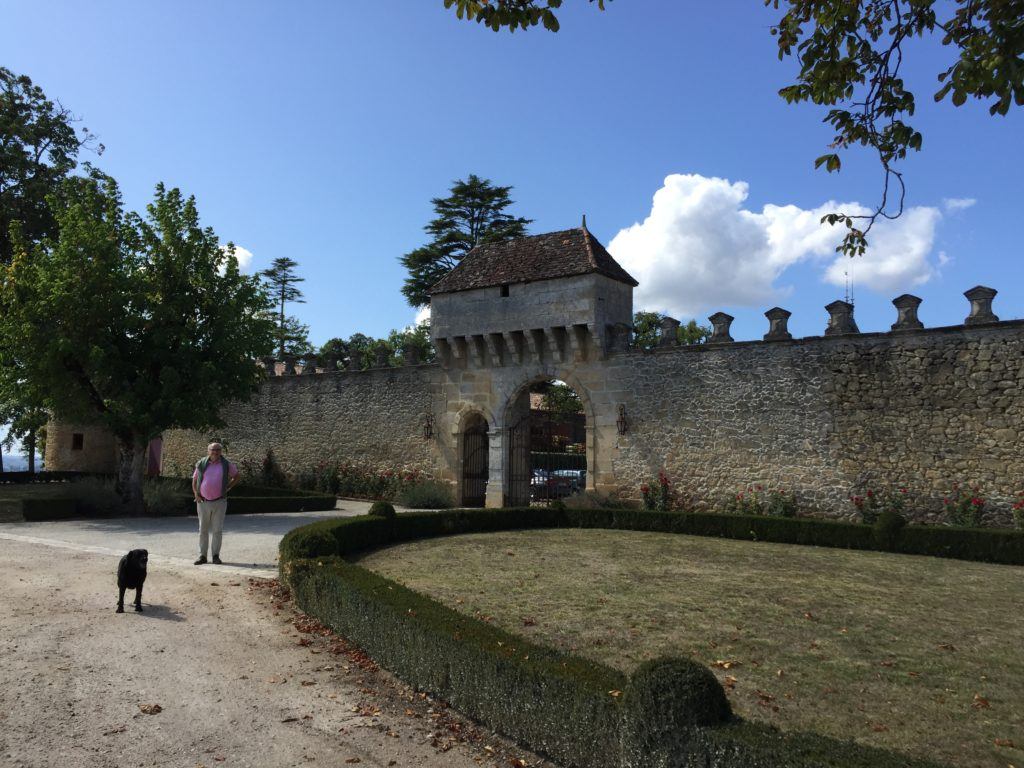
Quenin still sees the estate as a work in progress and with the real fruits of his investment coming through with the next generation. This mind set is common in Bordeaux with wine production thought of as a generational investment.
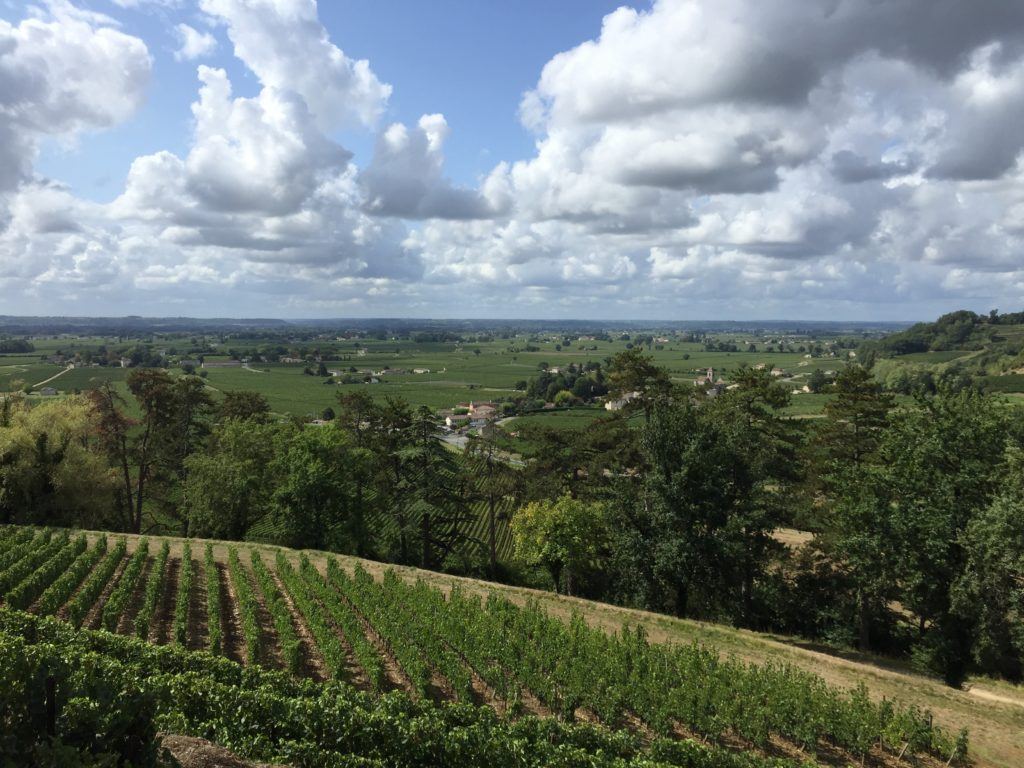
After lunch we went for an afternoon walk around the village of St Emilion. This beautiful medieval village built with the local limestone was designated a UNESCO world heritage site in 1999. It is a stunning place to take in and well worth a visit.
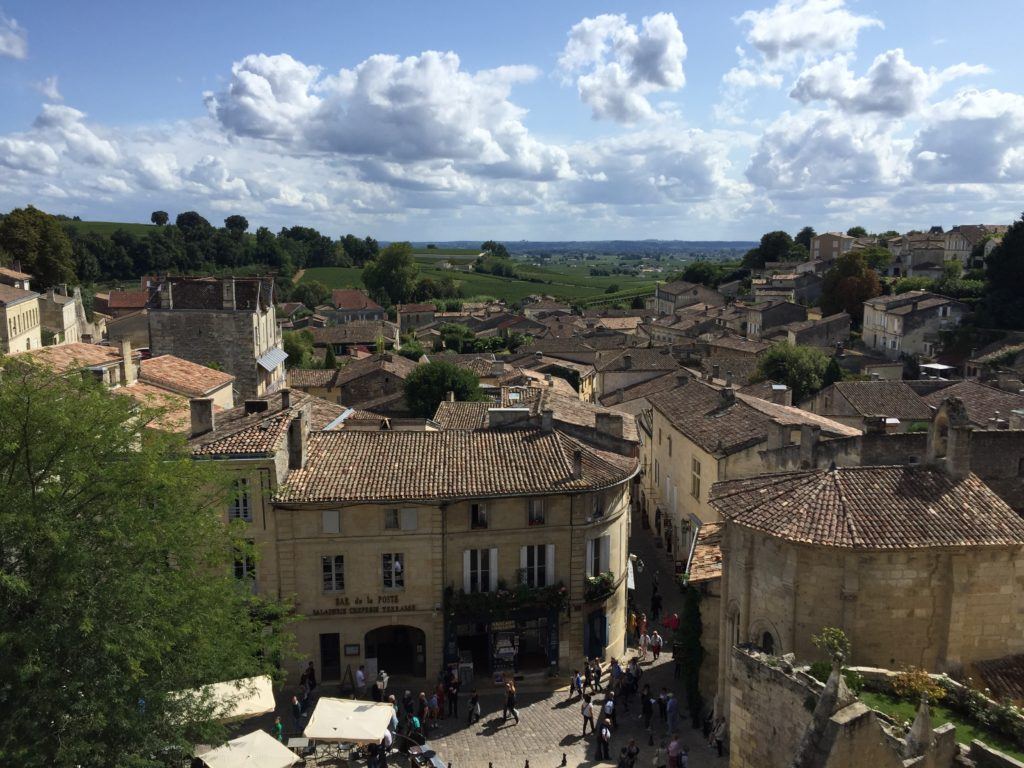
This is just a small snap shot of my trip to this huge wine region. As an area to visit it offers a wealth of different styles and places to explore, far removed from its somewhat stuffy image. Flights go direct from Southampton during the Summer, so it is easy to reach for long weekend or a short break.
